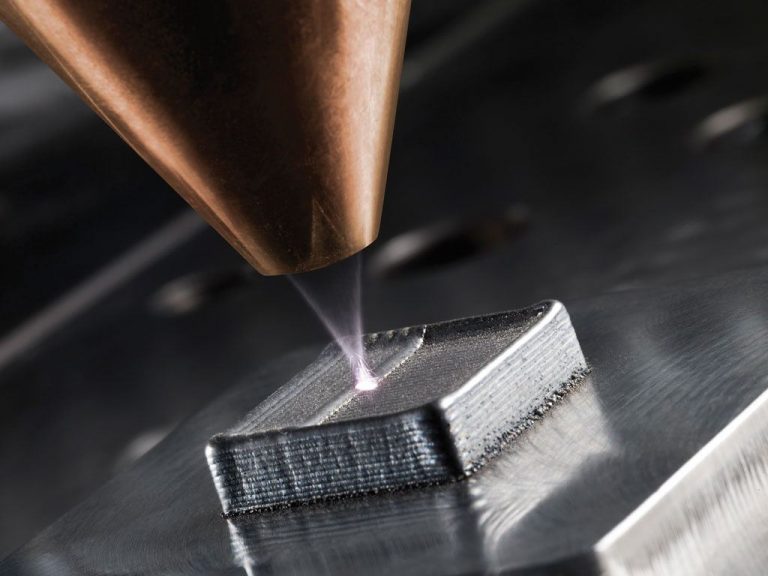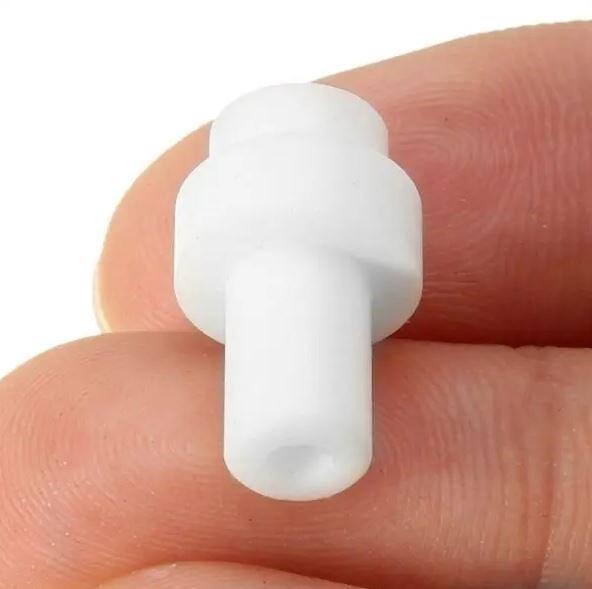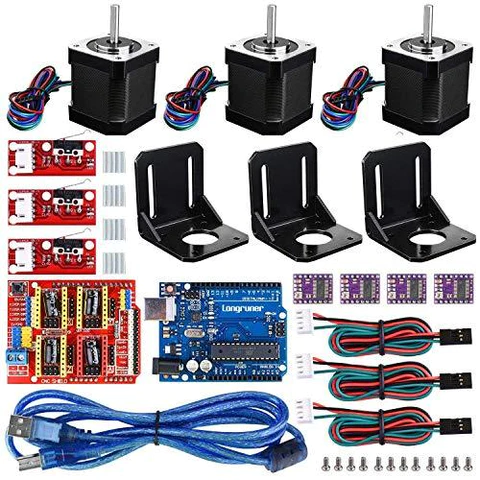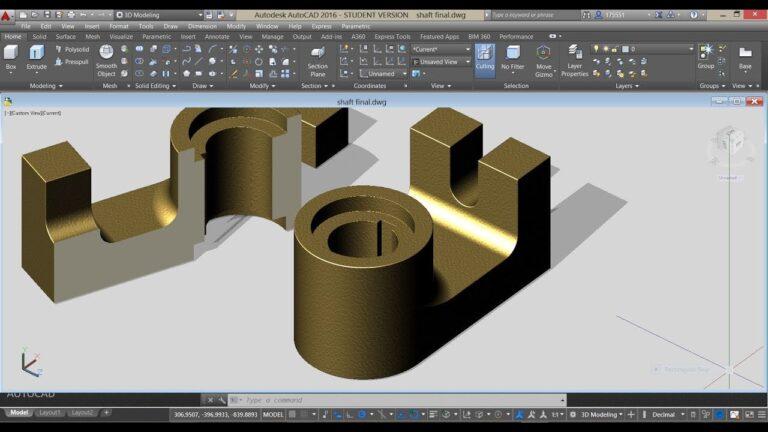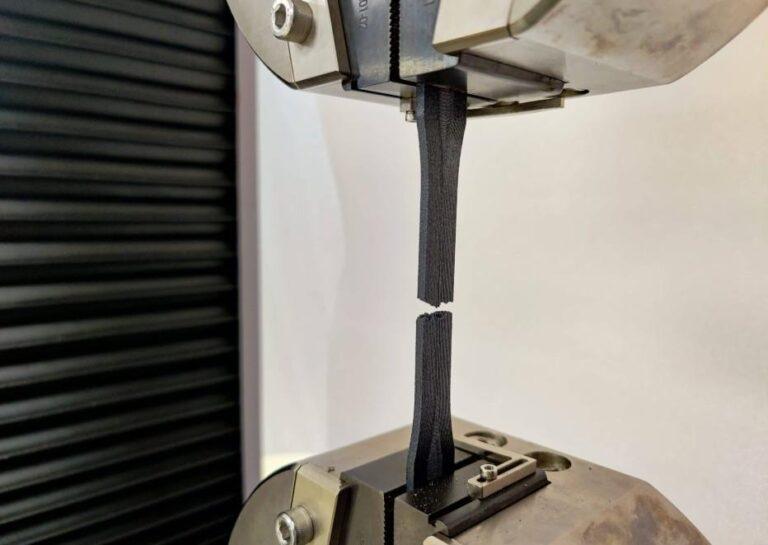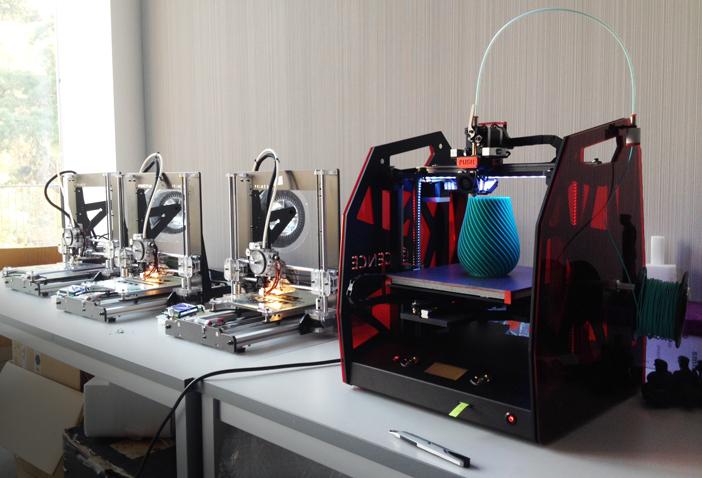3D Printed Cast: A Game Changer for Orthopedic Care and Recovery
Introduction
The world of orthopedic care has witnessed a significant transformation with the introduction of 3D printed casts. Traditionally, traditional plaster or fiberglass casts were the norm, often resulting in discomfort and inconvenience for patients. However, as technology progresses, These casts have emerged as game changer. Innovative casts offer a better fit and enhanced comfort. They also improve the overall healing process. 3D printed casts are the ones we are talking about. Furthermore, with the growing emphasis on sustainability, 3D printed casts offer an eco-friendly solution for fracture treatment. This blog post explores the benefits of 3D printed casts. They have the potential to reshape orthopedic care. These casts offer remarkable benefits. They can improve the recovery process. This innovative technology is changing orthopedic care.
A brief overview of traditional casts
Medical professionals used traditional casts for decades to treat fractures. They commonly used materials such as plaster and fiberglass. These casts have been a staple in fracture treatment. However, there are some drawbacks to traditional casts. Now, 3D printed casts offer a more innovative approach to fracture treatment. Initially, plaster casts were the go-to option, offering affordability and easy application. However, they had their drawbacks, such as being heavy, prone to cracking, and requiring a lengthy drying time.
In contrast, fiberglass casts emerged as a more lightweight and durable alternative. Despite these improvements, both plaster and fiberglass casts still present challenges in terms of comfort, breathability, and customization. These casts are a welcome advancement in orthopedic care. They address many issues with traditional casts. The development of 3D printed casts is a major factor. They pave the way for more innovative treatment options. Patients can benefit from a more personalized approach to care.
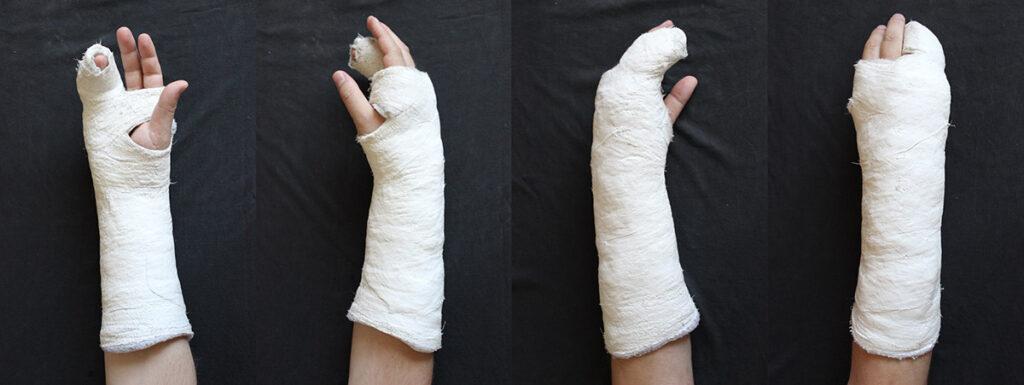
Introduction to 3D printed casts
The advent of casts has revolutionized the field of orthopedics, offering a more personalized and comfortable approach to fracture treatment. These casts are created specifically for each patient’s unique anatomy by utilizing advanced 3DP technology. This custom-fit design not only ensures a more comfortable experience but also significantly improves the healing process.
Moreover, 3DP casts have addressed the issue of breathability, a common complaint with traditional casts. Their lattice-like structure allows for increased airflow, thereby reducing the risk of skin irritation and unpleasant odors. Additionally, this innovative design is lighter in weight, making it more comfortable and easier to wear throughout the healing process.
Beyond comfort, 3D printed casts have the potential to expedite recovery time. By providing better support and stabilization, these casts can contribute to a more efficient healing process. Furthermore, integrating smart technologies, such as low-intensity pulsed ultrasound, can help stimulate bone growth and further improve healing outcomes.
In summary, the introduction of 3D printed casts has brought about a significant shift in orthopedic care. These innovative casts offer a more comfortable, customizable, and efficient approach to fracture treatment. They are poised to become the future of orthopedic recovery.
Importance of innovation in orthopedic care
Innovation is crucial for orthopedic care’s growth. It improves patient outcomes and treatment options. 3D printed casts are innovative technology. They can ease conventional fracture treatment constraints. Adopting 3D printed casts can lead to more effective treatment options.
The rising incidence of osteoporosis and the aging population brought attention to the need for practical treatments. Advancements like 3DP casts can improve patients’ quality of life. 3D-printed casts enable a quicker and less complicated recovery.
Additionally, incorporating smart technologies into orthopedic care may result in more precise diagnoses, individualized treatment regimens, and improved patient monitoring. The introduction of 3D printed casts is evidence of technology’s support for a patient-centric approach. The casts guarantee that each person receives the best care catered to their unique needs. 3D printing technology provides personalized and precise orthopedic care. The casts revolutionize traditional casting methods for fractures and injuries.
Innovations in orthopedic treatment can also lessen the overall strain on healthcare systems. Technologies like 3D-printed casts can enhance patient outcomes. 3D-printed casts may help to reduce follow-up visits and costs. 3D-printed casts can speed up the healing process. These benefits make 3D-printed casts an attractive option for orthopedic care.
The value of innovation in orthopedic care must be emphasized, to sum up. Healthcare practitioners can improve patient care. They can improve results as well. Healthcare practitioners can contribute to a more sustainable and effective healthcare system. They can do this by continuously evaluating and accepting new technologies. One such technology is 3D printed casts.
The Technology Behind 3D Printed Casts
Orthopedic professionals use modern 3D printing technology to initiate the process of creating personalized casts. They start by using a CT scan or other 3D scanning technology. This generates a digital model of the patient’s limb. Typically, this is the first step in creating a 3D printed cast. Ensuring that the final product tailors to the individual’s anatomy provide optimal support and comfort.
The team uses cutting-edge computer software to design the cast structure. They often incorporate a lattice-like pattern that enhances permeability and reduces weight. The shape encourages airflow and lowers the possibility of skin irritation. This improves patient comfort and speeds up the healing process.
There are numerous biocompatible and environmentally friendly material choices available. These include more sophisticated materials like carbon fiber composites as well as thermoplastics like PLA (polylactic acid). The material choice impacts the strength, durability, and weight of the cast. Choosing the ideal material is important for the patient’s demands. Different materials can be used for 3D printed casts. Each material has its unique properties. The selection of material depends on the individual patient’s needs.
Additionally, there is a significant desire in the medical community to incorporate smart technologies into orthopedic equipment. Healthcare providers can track a patient’s progress. They can make data-driven decisions about their treatment plan. This is done by embedding sensors or other technological components.
The technology used in modern orthopedic casts is advanced. 3D printing and smart gadgets have potential. They can revolutionize healthcare. This shows in making modern orthopedic casts. In conclusion, modern orthopedic casts demonstrate the potential of 3D printing and smart gadgets to revolutionize healthcare. We can anticipate more improvements in patient care, comfort, and general results if we adopt these technologies.
3D printing technology and materials used
3D printing tech rapidly advances. This tech produces a variety of items, including casts. The process is additive manufacturing. It layers material under computer control. It builds an object precisely over time.
Orthopedic professionals make casts using a variety of 3D printing processes, and fused deposition modeling (FDM) is a prominent option. The technique involves depositing hot thermoplastic material in thin layers. The layers are formed to create the desired shape. The shape is based on the digital model. The operator controls the deposition process.
The materials used to create 3D-printed casts are typically biocompatible and environmentally benign polymers. PLA (polylactic acid), a biodegradable thermoplastic made from renewable resources, finds widespread use due to its remarkable strength and lightweight. Individuals may use additional materials in 3D printing. ABS and carbon fiber composites are some examples. These materials provide improved durability and rigidity. They can be used to create stronger and more resilient casts. Moreover, they can be customized to meet the specific needs of patients.
Researchers are also continually creating new materials with enhanced properties. Innovations in bioactive materials, for instance, may facilitate quicker bone mending or lower the risk of infection.
In conclusion, the fusion of superior materials and 3D printing technology has produced game-changing inventions like the 3D printed cast. We can anticipate seeing even more remarkable developments in orthopedic treatment and other fields as research and development continue.
Customization and design process
Designing unique casts for each patient is a key benefit of 3D printing in orthopedic care.
CT scans or 3D scanning instruments are typically used to obtain an accurate digital depiction of the damaged limb. This information is then used to create a custom-fit cast for the patient. The customization process allows for a more precise fit and improved support and stabilization. Overall, 3D printing technology enables a more individualized approach to orthopedic care. The final cast will fit precisely thanks to this accurate representation, offering the best stability and support.
Specialized software designs the cast’s structure after collecting the digital model. The software considers factors such as stiffness, weight, and breathability. The cast provides the necessary support for healing. The use of lattice-like patterns allows for better airflow. The cast still serves its purpose in the healing process.
When customizing something, one can take aesthetics into account along with structural design. To make their cast more aesthetically pleasing, patients can select from a choice of colors and patterns. The patient’s entire experience and contentment with their therapy may benefit from this personal touch.
After completing the design, the 3D printer deposits layers of material to create the cast according to the digital plan. The company examines the finished product meticulously. The product is tested for quality and robustness. The aim is to ensure that it meets medical use requirements.
3D-printed casts improved patient comfort and satisfaction. The design and personalization features contributed to the improvement. Patients experience a faster and more joyful healing process. In conclusion, 3D-printed casts have significant benefits for patients. We may anticipate even greater advances in individualized orthopedic care as technology develops.
Advancements in medical 3D printing
In recent years, 3D printing in medicine has made amazing strides that go far beyond 3D-printed casts. The advent of bioprinting enables unique tissue and organ design, transforming transplantation and regenerative medicine. 3D printing creates patient-specific surgical implants and guides, improving accuracy and procedure results. Medical professionals use 3D printing to create custom equipment and prostheses, improving patient comfort and quality of life. We anticipate more groundbreaking uses in healthcare with continued research and development, revolutionizing medical disease prevention, identification, and treatment.
Benefits of 3D Printed Casts
3D printed casts offer numerous benefits that set them apart from traditional orthopedic treatment options. Firstly, their custom-fit design ensures improved comfort and support, tailored specifically to each patient’s unique anatomy. Additionally, the lattice-like structure enhances breathability, reducing the risk of skin irritation and discomfort during the healing process. Furthermore, these innovative casts are lightweight, making them easier to wear and less cumbersome. 3D-printed casts can expedite healing due to precise fit and advanced therapies. Low-intensity pulsed ultrasound can be incorporated into 3D-printed casts. The adoption of 3D printed casts is a significant step forward in orthopedic care. 3D printed casts promise better patient outcomes and a more comfortable healing experience.
Improved comfort and fit
Improved comfort and fit are among the most notable advantages of modern orthopedic solutions, such as 3D printed casts. By digitally scanning the patient’s limb, we tailor these casts specifically to their unique anatomy, ensuring optimal support and stabilization. The lattice-like structure of 3D printed casts provides a snug fit and better airflow. This reduces the risk of skin irritation and discomfort. In addition, these casts are lightweight and more comfortable to wear. This minimizes the inconvenience associated with traditional casts. Focusing on comfort and fit helps patients have a more pleasant healing process. This is especially important for those recovering from fractures.
Customization for individual anatomy
Modern orthopedic solutions like 3D printed casts offer a significant advantage in customization for individual anatomy. A digital model of the patient’s limb is created. Casts are tailored to the unique shape and contours of the limb. The personalized approach enhances comfort. It also improves the healing process by providing optimal stabilization. Customization allows for better integration with the patient’s lifestyle. The cast becomes easier to wear and adapt to during the recovery period.
In conclusion, this focus on individual anatomy has transformed orthopedic care, resulting in more effective and patient-centric treatment options.
Lightweight and breathable design
Innovative orthopedic solutions like 3D printed casts have a key feature of a lightweight and breathable design. The lattice-like structure offers a comfortable fit while promoting airflow, which significantly reduces the risk of skin irritation and unpleasant odors. This design not only improves the overall patient experience but also contributes to a more efficient healing process. Furthermore, the lightweight nature of these casts makes them less cumbersome, allowing for greater ease of movement and reduced fatigue during daily activities. Ultimately, the combination of a lightweight and breathable design significantly enhances the patient’s recovery journey, setting a new standard in orthopedic care.
Enhanced healing process
Innovative orthopedic solutions like 3D printed casts notably benefit the healing process. By providing a custom-fit design tailored to each patient’s unique anatomy, these casts deliver optimal support and stabilization for the affected area. This personalized approach not only ensures proper alignment but also promotes faster recovery. Furthermore, the integration of advanced therapies, such as low-intensity pulsed ultrasound, can stimulate bone growth and further improve healing outcomes. Ultimately, these technological advancements in orthopedic care lead to more efficient and effective treatment options, revolutionizing the way we approach the healing process for fractures and other injuries.
Better support and stabilization
Innovative orthopedic solutions like 3D printed casts provide key advantages in terms of support and stabilization. They utilize advanced technology to create a custom-fit design that properly aligns and supports the patient’s limb throughout the healing process. This precise fit not only contributes to a more comfortable experience but also promotes faster recovery by maintaining optimal bone position. Additionally, improved stabilization minimizes the risk of complications, such as malunion or nonunion, thereby enhancing overall patient outcomes. In summary, this focus on support and stabilization is transforming orthopedic care, leading to a more efficient and effective recovery process.
Possibility for incorporation of ultrasound or other therapies
The possibility for incorporation of ultrasound or other therapies in innovative orthopedic solutions, such as 3D printed casts, is a significant development in the field. By integrating advanced therapeutic options like low-intensity pulsed ultrasound, these casts can promote faster bone healing and reduce recovery time. Furthermore, this combination of cutting-edge technology and effective treatments allows for a more comprehensive approach to fracture management, ensuring better patient outcomes. Additionally, the flexibility to integrate other therapies in the future opens up a world of possibilities for even more effective treatment plans. In essence, these advancements demonstrate the immense potential of technology in revolutionizing orthopedic care and patient recovery.
what other innovation therapies use in 3d printed cast?
Medical professionals can integrate various innovative therapies and features into 3D printed casts to further improve the healing process, in addition to the popular therapy of low-intensity pulsed ultrasound.
- Electrical Stimulation: Embedding electrodes within the cast can provide electrical stimulation to the affected area, which can enhance bone growth and reduce pain.
- Vibration Therapy: Some 3D-printed casts have built-in vibration features that can accelerate the healing process by stimulating bone growth and improving blood circulation.
- Temperature Control: The cast can incorporate thermoelectric materials or heating elements to maintain an optimal temperature for healing, providing additional comfort and potentially reducing inflammation.
- Moisture Wicking: Using advanced materials with moisture-wicking properties can help keep the skin dry and reduce the risk of skin irritation or infection.
- Drug Delivery System: Incorporating a controlled drug delivery system within the 3D printed cast can provide localized and targeted release of medication, such as anti-inflammatory or pain-relieving drugs, directly to the injury site.
- Monitoring Sensors: Embedding sensors into the cast can monitor factors such as pressure, temperature, and moisture levels, allowing healthcare professionals to track the patient’s progress and adjust treatment as needed.
- Telemedicine Integration: By incorporating wireless communication technology, 3D-printed casts can transmit data to healthcare providers, allowing for remote monitoring and adjustments to treatment plans.
These innovative therapies and features, when combined with 3D-printed casts, offer a more comprehensive approach to fracture management and recovery, ultimately enhancing patient outcomes and overall comfort.
The Current State and Future Potential of Innovations in 3D Printed Casts
Although researchers and medical professionals have used some of the above-mentioned advances, and others are still possible, commercial 3D-printed casts have not fully realized these innovations. The ability to combine cutting-edge therapies and features into 3D printed casts is continually expanding thanks to the rapid advancements in 3D printing technology and material science. As researchers advance, they may eventually include more of these technologies in orthopedic care, substantially enhancing patient results and experiences.
Environmental benefits
An often-overlooked benefit of cutting-edge orthopedic treatments like 3D printed casts is their little impact on the environment. These castings reduce material waste by employing digital technology and only the minimum quantity of material required for a bespoke fit. Additionally, by using recyclable and biodegradable components in their creation, they have a smaller negative impact on the environment, supporting a more sustainable approach to healthcare. Digital manufacturing also enables on-demand production, which cuts carbon emissions by lowering transportation costs and inventory needs. In conclusion, adopting environmentally friendly techniques in orthopedic treatment, such as those related to 3D printed casts, helps to create a more sustainable and greener world.
Reduced waste
Modern orthopedic treatments, such as 3D printed casts, significantly reduce waste. While creating a 3D-printed cast, the medical professional takes into account the unique anatomy of the patient. This is in contrast to conventional plaster or fiberglass casts, which often involve over-manufacturing. This decreases material waste and helps healthcare become more environmentally friendly. Additionally, the manufacture of 3D-printed casts uses recyclable and biodegradable materials, which reduces their environmental effect even more. Modern healthcare must place a strong emphasis on minimizing waste to use resources more effectively and responsibly. In the end, implementing these environmentally friendly procedures in orthopedic treatment will help to advance the cause of a more sustainable and greener future.
Sustainable materials
The use of sustainable materials, including 3D printed casts, is essential in contemporary orthopedic solutions. These casts lessen their environmental impact by using eco-friendly materials during creation, encouraging a more sustainable approach to healthcare. Some of the materials used to create 3D-printed casts are biodegradable, which means they can break down naturally to produce less trash for landfills. Some producers also employ recycled materials, which further reduces the production process’s impact on the environment. Additionally, because sustainable materials are less likely to result in skin irritation or allergies, they are better for the environment as well as the patients who wear these casts. In conclusion, using sustainable materials in 3D printed casts is a significant step toward a healthcare system that is more ecologically responsible.
Challenges and Limitations
Any technical advancement will inevitably have drawbacks, and 3D printed casts are no exception. The production cost of 3D printed casts is one of the biggest obstacles because it requires the use of specialized tools and materials, making it more expensive than traditional casts. The process of making a custom-fit design can also be time-consuming, which could postpone therapy. Furthermore, not all patients, such as those with open wounds or significant edema, may benefit from the use of 3D printed casts. Furthermore, the casts’ size and weight restrictions due to existing technology make them less effective for treating bigger fractures. It’s also vital to keep in mind that the introduction of new technologies can necessitate more expensive training for healthcare professionals. In conclusion, while 3D-printed casts offer many advantages, we still need to work out problems and restrictions to realize their full potential.
Cost considerations
When it comes to 3D printed casts, cost is a crucial aspect to take into account. Even while this cutting-edge technology has numerous advantages over conventional casts, such as better comfort and quicker healing times, the cost of production can be rather high. Higher expenses may result from the 3D printing process’ need for specialized tools and materials, as well as from the need for a custom-fit design procedure. Additionally, insurance companies may not always cover 3D printed casts, which could increase the out-of-pocket costs for patients. It is crucial to remember that using 3D printed casts could potentially result in cost savings down the road because quicker recovery times and fewer difficulties can mean shorter hospital stays and fewer follow-up consultations. Additionally, as the technology develops and spreads, the price of production may go down, making 3D printed casts more affordable for a larger patient population.
Accessibility and availability
When it comes to 3D printed casts, accessibility, and availability are crucial factors to take into account. Although this technology has many advantages, certain hospitals and clinics might not have the resources or know-how to use it. Additionally, the expense of production may hamper the accessibility of certain patients, particularly those who live in underdeveloped or low-income areas. However, the availability of 3D printed casts may expand as the technology develops and becomes more pervasive, making them more accessible to a wider patient group. Additionally, the advantages of 3D printed casts, such as better comfort and quicker healing times, may make them a desirable option for patients, increasing demand and supply. In conclusion, it is crucial to take the accessibility and availability of 3D printed casts into account. We should make efforts to ensure that everyone who can benefit from this revolutionary technology can access it.
Regulatory and approval processes
Regarding 3D printed casts, regulatory and approval procedures are significant factors. The Food and Drug Administration (FDA) in the US is in charge of overseeing medical devices, including 3D printed casts. For the design, testing, and production of 3D printed medical devices, including casts, the FDA has published guidelines to guarantee their usefulness and safety. Further complicating the regulatory environment is the possibility that regulatory organizations in other nations have their procedures for approving medical devices. However, getting regulatory permission can be an expensive and time-consuming process, which might limit the accessibility of 3D printed casts. But sustaining the high standards of medical care and safeguarding patient safety depends heavily on the regulatory process. In conclusion, while the licensing and regulatory procedures for 3D printed casts can be difficult, they are crucial to guaranteeing the security and efficiency of this cutting-edge technology.
Real-life Applications and Success Stories
Real-life applications and success stories demonstrate the potential of 3D printed casts in improving orthopedic care. One notable success story is the case of a young boy in New Zealand who suffered a severe elbow fracture and required a cast. Traditional casting methods would have required the cast to immobilize the entire arm, severely limiting his mobility. However, the medical professionals used 3D printing technology to create a custom-fit cast design that offered greater flexibility and mobility in the elbow joint, while still ensuring support and stabilization.
The boy was able to return to his daily activities sooner than expected, demonstrating the benefits of 3D printed casts in promoting faster healing and recovery times. Additionally, doctors have used 3D printed casts to treat complex fractures, providing a more precise and personalized approach to care. These success stories and real-life applications demonstrate the potential of 3D printed casts to transform the way we approach orthopedic care.
Case studies of patients using 3D-printed casts
Case studies of patients using 3D-printed casts offer insight into the benefits of this innovative technology. One such case study involves a patient who suffered a complex ankle fracture and required a cast. By using a 3D printed cast, we created a custom-fit design that allowed for greater ventilation and improved hygiene, reducing the risk of complications such as skin irritation and infection.
The patient also reported improved comfort and mobility, allowing them to return to their daily activities sooner than expected. Another case study involved a patient with a wrist fracture who required a cast that would allow for greater mobility in the fingers. The designer used a 3D printed cast to create a custom design that provided support and stabilization to the wrist while allowing greater flexibility and movement in the fingers. These case studies demonstrate the potential of 3D printed casts in promoting faster healing times, improving patient comfort, and reducing the risk of complications.
Adoption by hospitals and orthopedic clinics
Realizing the promise of 3D printed casts requires adoption by orthopedic and hospital settings. Despite the technology’s many advantages, it has taken a while for it to become widely used because of several issues, such as production costs, regulatory restrictions, and accessibility issues. However, when the technology reveals more success stories and real-world applications of 3D printed casts, hospitals, and clinics may become more disposed to invest in it.
As production costs come down and regulatory procedures become simpler, adoption may increase. It is also important to keep in mind that patient demand may have a big impact on adoption as patients learn more about the advantages of 3D printed casts and look for physicians who provide this cutting-edge technology. In conclusion, we should make efforts to promote greater use and accessibility of 3D printed casts. Orthopedic clinics and hospitals must adopt this technology, as it is crucial for realizing its promises.
Collaboration between medical professionals and engineers
Collaboration between medical professionals and engineers is essential in the development and implementation of 3DP casts. Medical professionals provide the clinical expertise necessary to ensure that the casts meet the needs of patients, while engineers bring the technical expertise necessary to design and manufacture the casts. By working together, medical professionals and engineers can create custom-fit designs that address the unique needs of each patient, resulting in improved outcomes and faster healing times.
Additionally, collaboration can help to address some of the challenges and limitations of 3D printed casts, such as the cost of production and regulatory barriers. By working together, medical professionals and engineers can develop solutions that improve accessibility and reduce costs, making 3DP casts more widely available to patients in need. In conclusion, collaboration between medical professionals and engineers is crucial in realizing the potential of 3D printed casts and improving orthopedic care.
The Future of Orthopedic Care and 3D Printed Casts
Orthopedic treatment and 3D printed casts appear to have a bright future. 3D printed casts are likely to be used more frequently as technology develops, improving patient outcomes. Additionally, new materials and methods are being created that could enhance the convenience and usefulness of 3D printed casts even more. A more accurate and individualized approach to design may also be made possible by the use of cutting-edge imaging techniques like MRI and CT scans. Incorporating additional treatments, such as ultrasound, may also accelerate the healing process. There will probably be more investment in research and development as the advantages of 3DP casts are understood by a larger audience. Conclusion: Orthopedic care and 3D printed casts have a promising future and hold the potential to revolutionize how we approach and treat orthopedic injuries.
Potential for further advancements
The potential for further development of 3D printing technology and its use in orthopedic treatment is enormous. There might be new design and customization options as technology develops further, enabling more specialized and individualized treatments for orthopedic injuries. Additionally, the use of intelligent materials and sensors may make it possible to monitor the healing process and identify potential issues. The application of machine learning and artificial intelligence may also improve patient outcomes by enhancing the design process. In addition, the usage of 3D printing technology may go beyond casts to include additional orthopedic devices like implants and braces. The potential for more improvements in orthopedic care is probably only going to increase as 3D printing research and development proceed.
Integration with other technologies
The advantages of 3D printed casts in orthopedic care may be further enhanced by integration with other technology. For instance, the application of virtual reality technology may enable more effective and precise design procedures and offer patients an immersive experience to speed up their recuperation. The use of wearable technology may also enable real-time monitoring of patients’ development, giving medical personnel crucial information to guide treatment choices. Additionally, telehealth technology may make orthopedic care more accessible by enabling patients in rural or underserved locations to obtain the same standard of care as those in larger cities. The potential for bettering orthopedic treatment and patient outcomes will only increase as 3D printing technology develops and becomes more integrated with other technologies.
Development of new materials
An exciting topic of study in the field of orthopedics is the creation of new materials for 3D printing. For instance, the combination of bioactive and biodegradable materials might make it possible to design casts that actively encourage healing and eventually degrade as the damage heals. Smart materials, such as shape-memory alloys, may make it possible to make casts that can adapt to variations in temperature and pressure, giving patients a more comfortable and individualized fit. Additionally, the introduction of nanomaterials such as graphene may make it possible to produce casts that are more flexible and strong. The potential for better results, increased patient comfort, and happiness is enormous as 3D printing material research and development continue.
Broader implications for the healthcare industry
The use of 3D printing technology in orthopedic care has broader implications for the healthcare industry as a whole. The technology may allow for more efficient and cost-effective production of medical devices and implants, reducing the time and expense associated with traditional manufacturing processes. Additionally, the customization and personalization capabilities of 3D printing may lead to improved patient outcomes and greater patient satisfaction. The development of new materials and integration with other medical technologies may also have implications beyond orthopedic care, potentially revolutionizing the way a variety of medical devices and implants are designed and produced. As 3D printing technology continues to advance, likely, its impact on the healthcare industry will only continue to grow.
Top Companies and Websites Offering 3D Printed Casts for Orthopedic Care
ActivArmor
ActivArmor produces 3D-printed casts and splints that are customized to fit each patient’s unique anatomy. Their casts are waterproof, breathable, and lightweight, and are made from medical-grade materials. ActivArmor has partnerships with medical professionals across the United States, and their casts have been used to treat a variety of injuries.
Cast21
Cast21 produces 3D printed casts that are designed to be comfortable and customizable, with options for ventilation and support. Their casts are made from a proprietary resin that is both waterproof and biodegradable, reducing environmental impact. Cast21 has received FDA clearance for its products and is currently available for use in select medical facilities.
3DHEALS
3DHEALS is a global platform that brings together experts in 3D printing and healthcare. They have a directory of companies that produce 3D printed orthopedic devices, including casts. The directory is a great resource for patients and medical professionals looking to explore the different options available.
Xkelet
Xkelet is a Spanish company that produces 3D printed orthopedic devices, including casts and braces. They use a combination of 3D scanning and printing technology to produce customized products that are both functional and aesthetically pleasing. Xkelet also offers the option to incorporate ventilation and personalized graphics on their casts.
Exiom
Exiom is a US-based company that offers 3D-printed medical solutions, including casts, braces, and prosthetics. They use advanced technology and materials to produce customized products that provide patients with maximum comfort and functionality. Exiom also offers a streamlined design process, allowing medical professionals to quickly and easily order the products they need.
CastPrint
CastPrint is a UK-based company that specializes in 3D printed orthopedic casts. Their casts are designed to be lightweight, breathable, and water-resistant, offering patients a more comfortable and hygienic alternative to traditional plaster casts. CastPrint uses 3D scanning technology to create a custom-fit cast for each patient, ensuring optimal support and immobilization. They also offer a range of color options, allowing patients to personalize their cast and make a fashion statement. Overall, CastPrint’s 3D printed casts offer a modern and innovative solution to traditional casting methods.
Conclusion
In conclusion, the application of 3D printing technology to orthopedic care has the potential to fundamentally alter how we approach the treatment of musculoskeletal injuries and illnesses. Numerous advantages of the technology include increased personalization and customization, enhanced comfort and fit, and minimal environmental effects. The application of 3D printing technology in healthcare does, however, present several difficulties and constraints, including financial and regulatory constraints. However, as technology develops and advances, it is anticipated that its influence on orthopedic treatment and the healthcare sector as a whole will only increase. In the end, the use of 3D printing technology in healthcare may result in better results, higher levels of patient satisfaction, and a more resilient and effective healthcare system.
Recap of the impact of 3D printed casts on orthopedic care
In conclusion, the application of 3D printing technology to orthopedic treatment has significantly changed the industry and brought many advantages to patients, healthcare professionals, and the environment. These advantages include enhanced comfort and fit, more personalization and customization, waste reduction, and the possible integration of additional medical devices. The application of 3D printing technology in healthcare does, however, present several difficulties and constraints, including financial constraints and formal regulatory approval procedures. However, as technology develops and advances, it is anticipated that its influence on orthopedic treatment and the healthcare sector as a whole will only increase. This will result in better outcomes, more patient satisfaction, and a more durable and effective healthcare system.
Emphasis on continued innovation and development
To ensure the sustained success of 3D printing in orthopedic care and the larger healthcare sector, innovation and advancement in the field are crucial. Engineers and medical professionals must work together as technology develops to make sure that new applications and materials are secure and efficient. To maintain patient safety, regulatory organizations must also adjust to the evolving medical device manufacturing industry. Furthermore, combining 3D printing with additional medical technology, like robots and AI, may produce even more sophisticated and effective treatment solutions. We can guarantee that 3D printing technology remains at the forefront of orthopedic care and contributes to better patient outcomes and a more sustainable healthcare system by stressing ongoing innovation and development.
How to Get Started with 3D Printed Casts?
- Research and find a medical professional
Research to find a medical professional who is experienced with 3D printed casts and can help determine if it is a suitable option for your injury or condition.
- Discuss customization options
Talk with your medical professional about customization options, such as the fit, design, and materials used for the cast.
- Get a scan of the affected area
A 3D scan will be taken of the affected area to ensure an accurate fit and design for your cast.
- Cast creation
The 3D printed cast will be created based on the scan and customization options discussed with your medical professional.
- Cast fitting and adjustments
The cast will be fitted and adjusted by your medical professional to ensure a comfortable fit and proper stabilization of the affected area.
- Follow post-cast care instructions
Follow any post-cast care instructions provided by your medical professional, such as exercise and physical therapy recommendations, to aid in the healing process.
FAQs
The cost of a 3D printed cast can vary depending on factors such as the type of injury and customization options. However, it is generally comparable to the cost of a traditional cast.
Many insurance companies cover the cost of 3D printed casts, but it is important to check with your provider to determine your specific coverage.
3D printed casts can be used for a variety of injuries and conditions, but it is important to consult with a medical professional to determine if it is a suitable option for your specific injury.
Many 3D printed casts are waterproof or water-resistant, but it is important to check with your medical professional or the manufacturer to determine the specific properties of your cast.
The process of creating a 3D printed cast can take several hours, with additional time needed for fittings and adjustments. The length of time can vary depending on the complexity of the injury and the customization options chosen.

